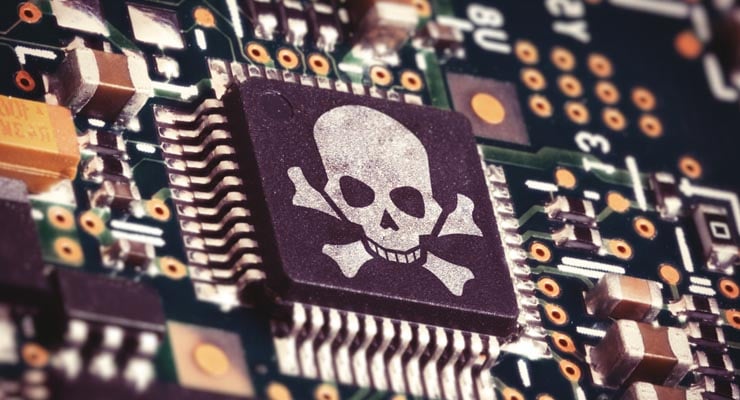How to protect yourself against a ransomware infection
Ransomware has quickly become one of the biggest online threats facing both businesses and home users, and this file encrypting malware is only getting increasingly sophisticated.
Ransomware is a type of malware that works by infecting a device and encrypting all of the important files it can find, rendering them inoperable and useless. Depending on that sophistication, the ransomware may be able to travel to other connected devices and encrypt files on those devices as well.
In worse case scenarios, the victim’s only chance of getting their files back is to pay for a decryption key, which is in the possession of the crooks. And of course there is no guarantee that the crooks will provide that decryption key after the victim pays up. Even removing the ransomware doesn’t get your files back, because they’re still encrypted.
This means that ransomware is a particularly destructive type of malware that can potentially result in the loss of countless personal files including photos, documents, videos and other files we store on our computers.
As such, it’s extremely important that we all need to take important steps that will help protect us from would-be ransomware infections. Here we outline some important steps.
Keep your software up-to-date
Running out-dated software that isn’t equipped to protect against ransomware is one of the most common ways ransomware can infect devices and spread. In 2017, the WannaCry ransomware almost crippled the UK’s NHS service thanks to many of their computers running the antiquated Windows XP operating system which allows the ransomware to spread by itself.
The reason is because old software like Windows XP are no longer supported, meaning crooks know how to exploit them, and those exploits are no longer patched up. This means crooks can infect systems like Windows XP much more easily, even without the user falling for a scam which is how most ransomware infections occur.
Running current software, including your operating system and your Internet browser, and keeping them updated by enabling automatic updates, is an important step to prevent ransomware infections.
Keep your data backed up
Ransomware is so destructive because it encrypts your files, rendering them useless. While the ransomware infection itself can usually be removed easily enough, you’ll never get those files back unless you risk trying to pay the ransom.
This is why we recommend performing regular backups of your data, so if you ever do get infected with ransomware, once you’ve removed the infection, you can restore your files without ever having to pay up. Of course, having your data backed up is also a good idea anyway as it protects you from any kind of data loss. Our recommended backup solutions are here.
Whitelist – don’t blacklist – emails
It is important to understand that the majority of ransomware infections that cause havoc within small businesses or on computers in the home happen because malicious email attachments were opened by the victim.
Email attachments are one of the most popular ways to distribute ransomware to the victim, and such malicious emails can employ a countless number of social engineering tricks to lure you into opening the dangerous attachment.
As such, we always recommend whitelisting emails. This means only trusting emails (and their attachments) that you were expecting to arrive from a particular person at a particular point in time. All other emails should be treated with caution, and discarded if necessary. Of course, never open an attachment from an email if it looks suspicious, you weren’t expecting it or if you don’t know the sender.
Sponsored Content. Continued below...
Have good Internet Security installed
Your security software – such as your antivirus – should always be a last line of defence against malware, meaning you shouldn’t rely on it to keep you safe. Practising good Internet security habits and knowing how malware infects your computer should prevent the majority of would-be infections from ever happening.
But in case something does go wrong, or if crooks manage to exploit vulnerabilities in the software you use, it’s nice to have it there to help keep you malware free. The best Internet security software to have installed will depend on the user. Experienced users will largely be happy with lightweight and free antivirus like the free versions or AVG or MalwareBytes. Others may prefer a more thorough solution. Our premium choice for Internet security is below.

Don’t download ransomware
While it may sound self-evident, the best way to avoid ransomware is to never come into contact with it in the first place. This means knowing where you’ll most likely encounter it and how it tries to infect you.
Ransomware doesn’t only spread through email attachments as we explained above, but can be downloaded from the Internet. Many websites will attempt to trick victims into downloading something they believe is genuine, but it’s actually ransomware. It’s important never to give permission to download or install anything onto your computer unless you are entirely confident it is safe. If a website you don’t trust ever asks you to download anything, no matter what they claim it is, always say no.
Continued below...
Thanks for reading, we hope this article helped, but before you leave us for greener pastures, please help us out.
We're hoping to be totally ad-free by 2025 - after all, no one likes online adverts, and all they do is get in the way and slow everything down. But of course we still have fees and costs to pay, so please, please consider becoming a Facebook supporter! It costs only 0.99p (~$1.30) a month (you can stop at any time) and ensures we can still keep posting Cybersecurity themed content to help keep our communities safe and scam-free. You can subscribe here
Remember, we're active on social media - so follow us on Facebook, Bluesky, Instagram and X
